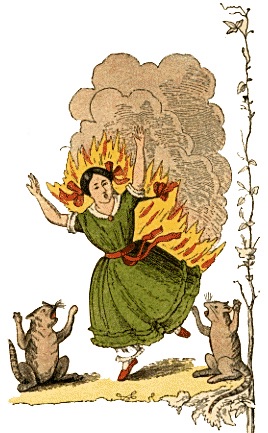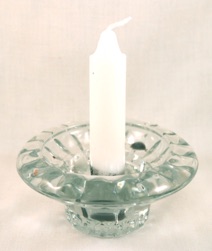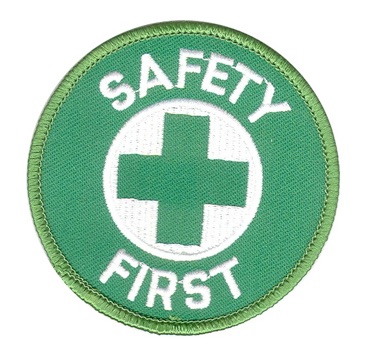There are a few simple things any teacher can do to keep her classes as safe as possible. While I have covered fire safety in great detail on another page, I will discuss the basics here as they apply to a class setting. Ideally, the use of electric styluses would remove most of these problems, but this is not an economically viable solution for most teachers, nor is it as interesting a way to learn how to write a pysanka, there is something primal, something visceral, about candles and flames.
Safety instruction should be a part of any basic pysanka class. Fire safety MUST be discussed with the students, and rules adhered to.
-
1.Tie back hair. There is nothing so startling as suddenly having you hair go up in a sizzle and puff of smoke. This can happen to girls–and boys– with long, loose hair who get a bit too close to the flame. The bangs or other loose hair can get singed:
Tying hair back (as the girl has done in the photo below) is simple, and is easier than trying to later explain the damage to an anxious parent.
-
2.Hide the matches. Children of a certain age, and particularly boys, have a great fascination with fire and matches. They are drawn to them like moths to a flame, like cats to catnip. It’s a dangerous combination.
I simply do not leave out matches–or lighters–when teaching younger students (non-adults). I keep a lighter in my pocket, or at another table, and light candles when they are needed. If candles go out, students can re-light them from a neighbor’s candle. Make sure you discuss with them the safe way to do this–to lower the unlit candle to the flame of the lit one.
For those of you not yet scarred for life by reading
Struwwelpeter when young, an illustration showing the danger of playing with matches (Pauline and the Matches) :
-
3.If possible, have individual candles. Sharing candles is possible, but is more likely to result in jostling and knocking them over. If you can, set one candle at each work space. If not, set each candle in the middle of the table, between students on opposite sides of the table.
-
4.Use
stable candleholders with a
low center of gravity:
NO YES
A candle holder of the sort pictured on the left is harder to reach and is much more likely to get knocked over if jostled. Falling candles can spill hot wax and cause fires as well as burn injuries.
Some instructors have reported success in using tea lights, which are shorter and safer than tapers, but others note that the flame does not get hot enough to melt wax quickly and well, and that they are useless for removing wax.
-
5.Use plastic tablecloths. They keep the table clean, and there is no risk of them catching fire, as newspapers or paper tablecloths might. They have the added advantage of being cheap (I get mine at a dollar store) and reusable.
-
6.Use delrin styluses. While a bit more expensive than the old-fashioned wooden-handled ones, delrin styluses (or similar plastic-handled styluses) have the advantage of not catching fire. I have seen many a wooden stylus burst into flame, often when held by a pyromaniacal young boy. Not only are these styluses safer but, in the long run, cheaper as well.
-
7.Limit paper debris on the tables. Minimize the number of design sheets (or laminate them–they’ll last longer this way, too). Have a separate dye table, and leave all paper towels used for drying the eggs after dyeing there. This way, even if a candle were to get knocked over, there would be no fuel for a fire to get going.
Back to Main Teaching page
Back to Main Pysankarstvo page








